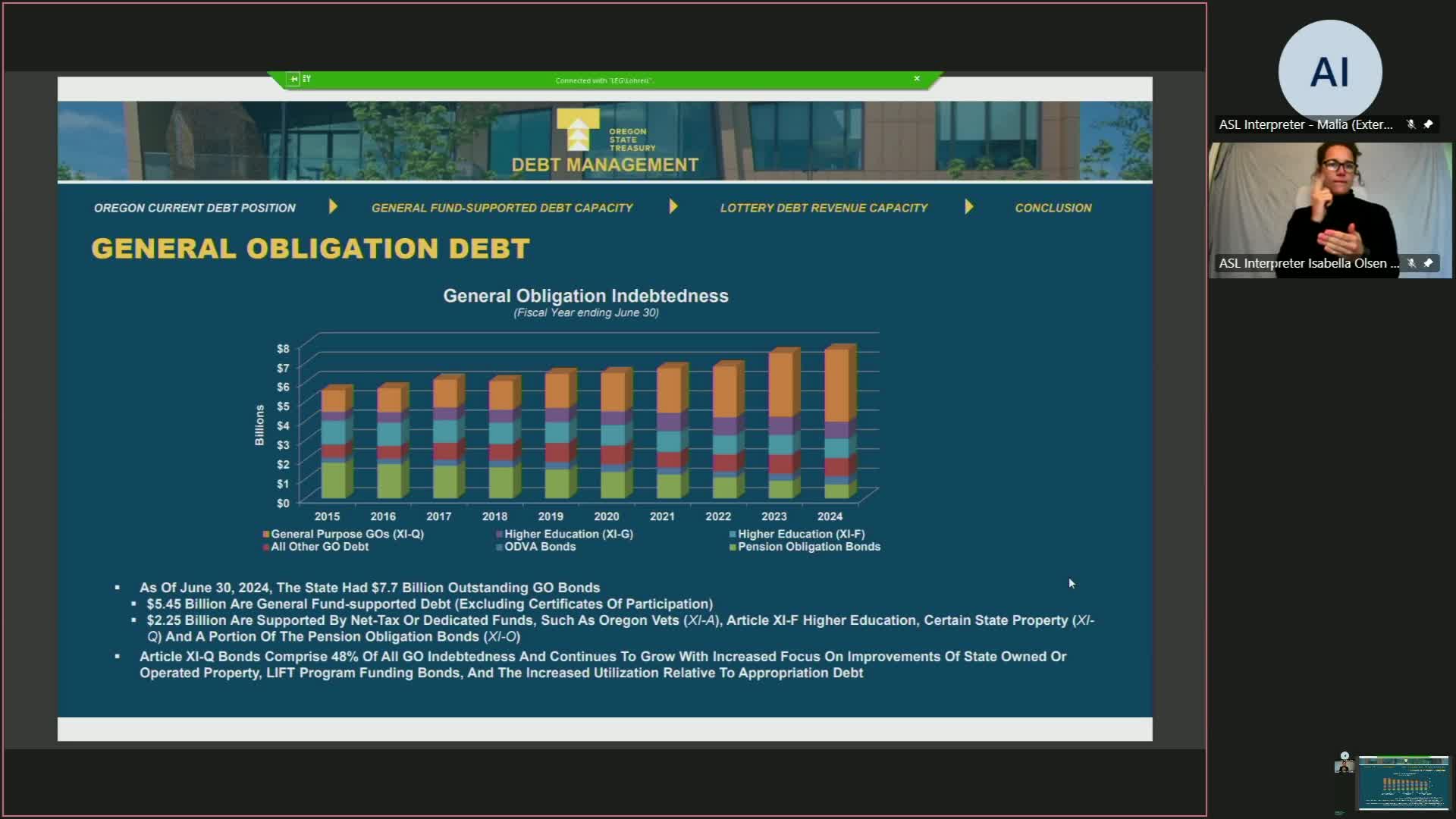Oregon maintains high credit ratings amid upcoming bond market activity
March 21, 2025 | Capital Construction, Ways and Means, Joint, Committees, Legislative, Oregon
This article was created by AI summarizing key points discussed. AI makes mistakes, so for full details and context, please refer to the video of the full meeting. Please report any errors so we can fix them. Report an error »

Oregon's financial health took center stage during the Joint Committee on Ways and Means Subcommittee on Capital Construction meeting on March 21, 2025, as officials discussed the state's impressive credit ratings and the implications for its debt obligations. With a total debt of approximately $12.8 billion, the per capita debt stands at around $3,200, a figure that has been gradually increasing.
The meeting highlighted Oregon's strong financial position, with credit rating agencies affirming the state's high ratings due to sound financial controls, a stable budget, and growing reserves. Notably, Oregon's lottery credit recently received a AAA rating, the highest possible, which complements its existing top ratings from other agencies. This strong credit standing allows the state to issue bonds at lower interest rates, benefiting taxpayers.
Senator McLean pointed out that higher ratings typically lead to lower interest rates on debt obligations, which is indeed the case for Oregon. The state’s ODOT bonds are currently achieving around a 4% rate, while lottery bonds are being issued at rates between 3.6% and 3.9%. These rates are competitive and reflect the state's solid credit quality.
The discussion also touched on the tax-exempt status of Oregon's bonds, which significantly lowers borrowing costs. Without this status, the state would face higher interest rates, impacting its financial strategy.
As Oregon prepares to enter the bond market next month, officials are optimistic about maintaining these favorable ratings, which position the state well compared to its peers. The meeting underscored the importance of Oregon's financial management and the benefits it brings to residents, reinforcing the state's commitment to fiscal responsibility and effective governance.
The meeting highlighted Oregon's strong financial position, with credit rating agencies affirming the state's high ratings due to sound financial controls, a stable budget, and growing reserves. Notably, Oregon's lottery credit recently received a AAA rating, the highest possible, which complements its existing top ratings from other agencies. This strong credit standing allows the state to issue bonds at lower interest rates, benefiting taxpayers.
Senator McLean pointed out that higher ratings typically lead to lower interest rates on debt obligations, which is indeed the case for Oregon. The state’s ODOT bonds are currently achieving around a 4% rate, while lottery bonds are being issued at rates between 3.6% and 3.9%. These rates are competitive and reflect the state's solid credit quality.
The discussion also touched on the tax-exempt status of Oregon's bonds, which significantly lowers borrowing costs. Without this status, the state would face higher interest rates, impacting its financial strategy.
As Oregon prepares to enter the bond market next month, officials are optimistic about maintaining these favorable ratings, which position the state well compared to its peers. The meeting underscored the importance of Oregon's financial management and the benefits it brings to residents, reinforcing the state's commitment to fiscal responsibility and effective governance.
View full meeting
This article is based on a recent meeting—watch the full video and explore the complete transcript for deeper insights into the discussion.
View full meeting
